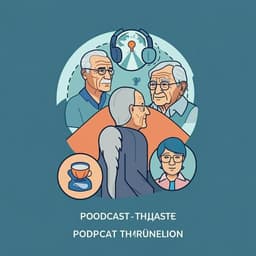
Sociology
The role of the Internet in later life autonomy: Silver surfers in Spain
C. Llorente-barroso, M. Sánchez-valle, et al.
This fascinating study by Carmen Llorente-Barroso, María Sánchez-Valle, and Mónica Viñarás-Abad explores how Spanish seniors aged 60-79 navigate the digital landscape, revealing distinct user clusters and their varying levels of internet engagement, security perceptions, and e-commerce usage. Discover how despite their differences, online shopping and digital administration are becoming commonplace among seniors!
Playback language: English
Related Publications
Explore these studies to deepen your understanding of the subject.







